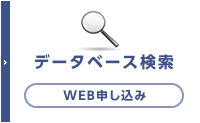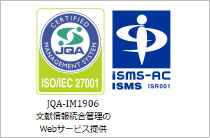ホームIMICライブラリMMWR抄訳2017年(Vol.66)新生児集中治療部における病院が報告した母乳使用の格・・・
2017/12/08Vol. 66 / No. 48
MMWR66(48):1313-1317
Disparities in Hospital-Reported Breast Milk Use in Neonatal Intensive Care Units — United States, 2015
新生児集中治療部における病院が報告した母乳使用の格差 ― アメリカ、2015年
母乳は乳児の栄養として推奨されており、早産児に対しては母親の母乳が利用できない場合、殺菌したドナー母乳が推奨されている。非ヒスパニック系黒人の母親では、早産および授乳ができないリスクが上昇しているが、新生児集中治療部(NICU)での母乳使用に人口格差が存在するかは明らかではない。病院の郵便番号エリアの人口構成に基づいたNICUでの母乳使用を調査するために、個人レベルの人口統計データを収集していないCDCの2015年のMaternity Practices in Infant Nutrition and Care(mPINC)調査からのデータを、2011~2015年のU.S. Census Bureau’s American Community Survey(ACS)とリンクさせた。NICUのある654の病院のうち、602病院(92.0%)がACSで郵便番号レベルの人種データが利用可能であり、母親自身の母乳使用およびドナーの母乳使用についてのデータがあったのは、それぞれ576病院(95.7%)、568病院(94.4%)であった。病院は、所在地の郵便番号エリアの黒人居住者のパーセンテージが>12.3%(全国平均)または≦12.3%により分類した。NICUのある602病院のうち、222病院(36.9%)は黒人居住者のパーセンテージが全国平均を上回った。NICUレベルおよび施設の大きさは、黒人居住者のパーセンテージが高いおよび低い郵便番号の病院で、同等であった。すべての病院において、NICUで母親自身の母乳を投与されている乳児の割合は推定で75.0%(中央値)で、黒人居住者の少ない郵便番号のNICU(80.0%)で、黒人居住者の多い郵便番号のNICU(72.0%)よりも増加した。母乳バンクの母乳を投与されている乳児の割合は10.0%(中央値)で、黒人居住者の少ない郵便番号のNICU(10.0%)で、黒人居住者の多い郵便番号のNICU(5.0%)よりも増加した。黒人居住者の多い郵便番号の病院では、75%以上の乳児が母親自身の母乳を投与されているNICUの割合は48.9%、ドナー母乳を使用してないNICUの割合は38.0%で、一方、黒人居住者の少ない郵便番号の病院では、それぞれ63.8%、29.6%であった。黒人母親の割合が全米平均を上回っている郵便番号の病院において、母乳使用を増やすための目標を定めた努力は、早産や他の高リスク乳児のための母乳へのより公平なアクセスを確保するのに役立つかもしれない。
References
- American Academy of Pediatrics. Policy statement: breastfeeding and the use of human milk. Pediatrics 2012;129:e827–41. <https://doi.org/10.1542/peds.2011-3552>
- Hamilton BE, Martin JA, Osterman MJK. Births: preliminary data for 2015. Natl Vital Stat Rep 2016;65:1–15.
- Allen JA, Li R, Scanlon KS, et al. Progress in increasing breastfeeding and reducing racial/ethnic differences—United States, 2000–2008 births. MMWR Morb Mortal Wkly Rep 2013;62:77–80.
- Committee on Nutrition, Section on Breastfeeding, Committee on Fetus and Newborn. Donor human milk for the high-risk infant: preparation, safety, and usage options in the United States. Pediatrics 2017;139:e20163440. <https://doi.org/10.1542/peds.2016-3440>
- Updegrove KH. Donor human milk banking: growth, challenges, and the role of HMBANA. Breastfeed Med 2013;8:435–7. <https://doi.org/10.1089/bfm.2013.0079>
- CDC. Maternity Practices in Infant Nutrition and Care (mPINC) survey. Atlanta, GA: US Department of Health and Human Services, CDC; 2015. <https://www.cdc.gov/breastfeeding/data/mpinc/>
- Lind JN, Perrine CG, Li R, Scanlon KS, Grummer-Strawn LM. Racial disparities in access to maternity care practices that support breastfeeding—United States, 2011. MMWR Morb Mortal Wkly Rep 2014;63:725–8.
- Jones KM, Power ML, Queenan JT, Schulkin J. Racial and ethnic disparities in breastfeeding. Breastfeed Med 2015;10:186–96. <https://doi.org/10.1089/bfm.2014.0152>
- US Department of Health and Human Services. The Surgeon General’s call to action to support breastfeeding. Washington, DC: US Department of Health and Human Services, Office of the Surgeon General, 2011. <https://www.ncbi.nlm.nih.gov/books/NBK52682/>
Copyright © 2013 International Medical Information Center. All Rights Reserved.












